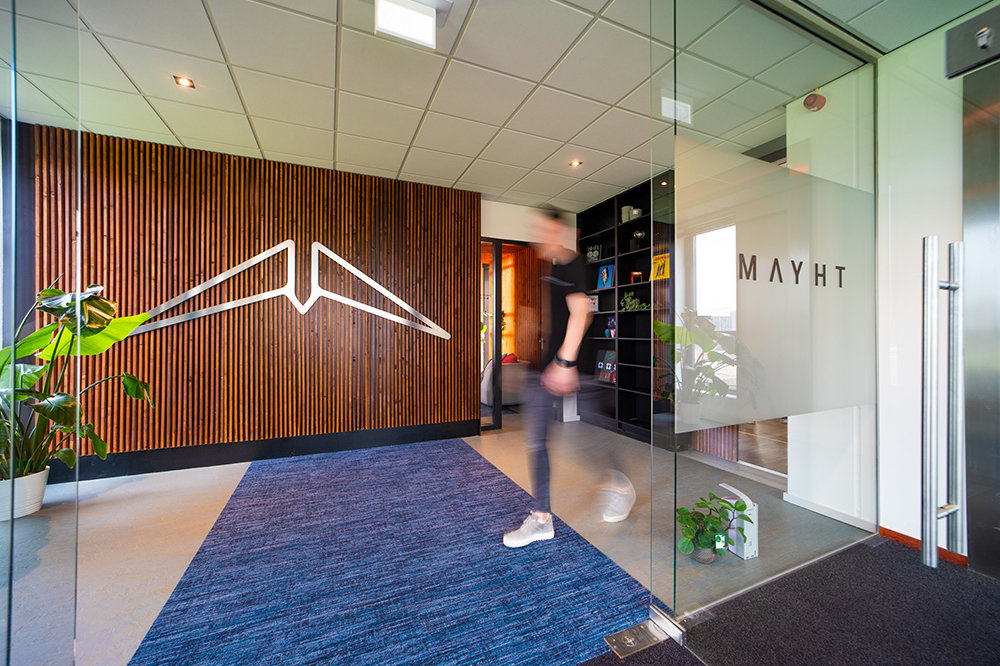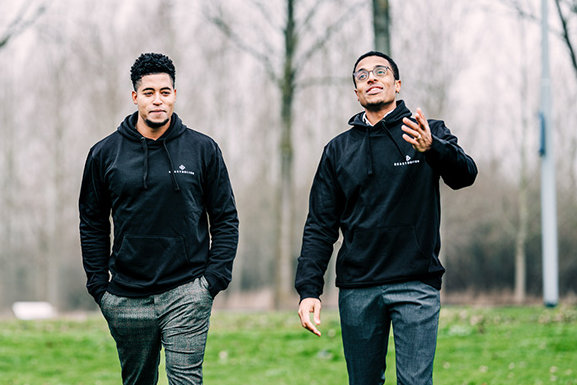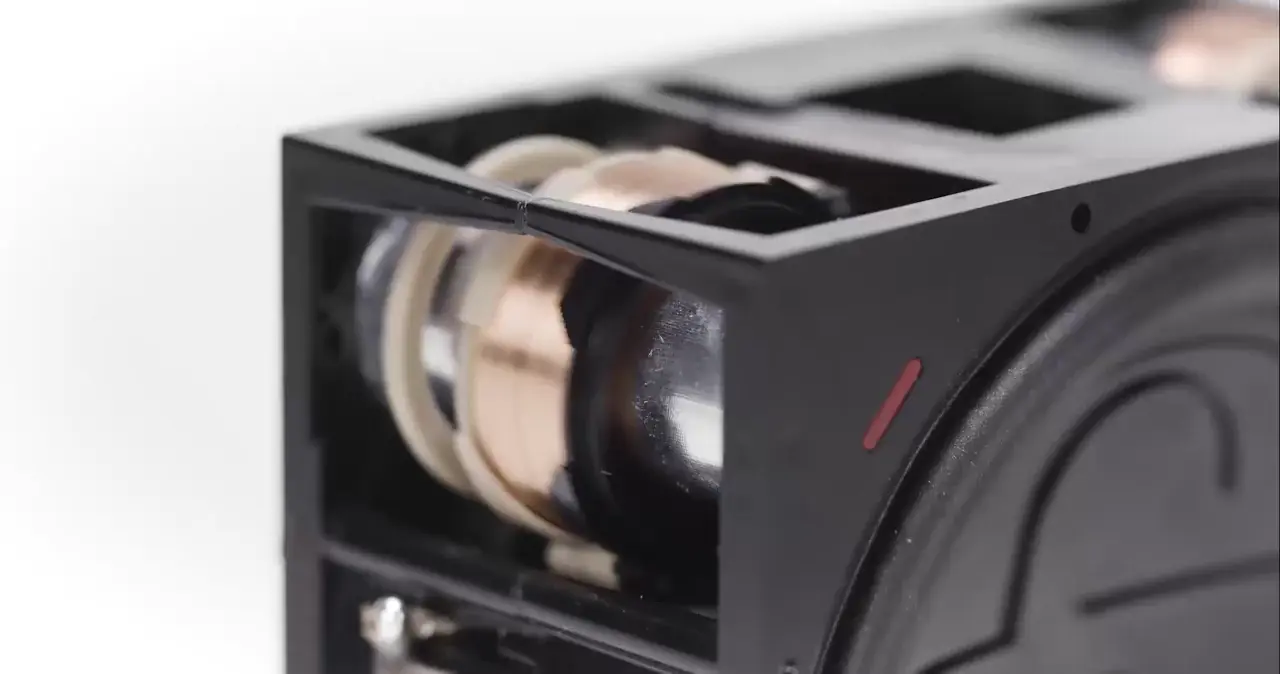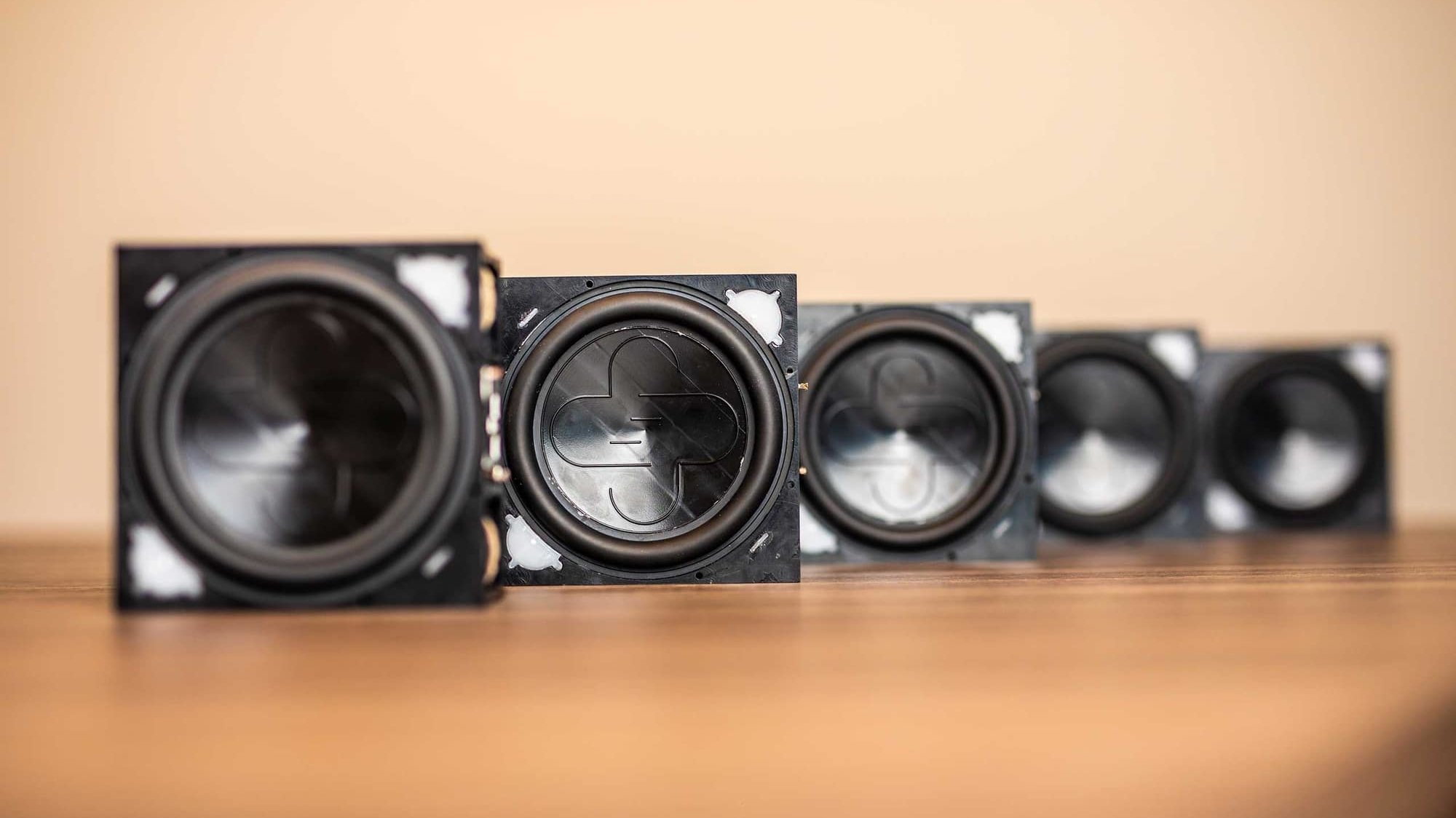Building the best speaker ever
For a long time, the slogan regarding speakers was ‘the bigger the better’. The brothers Timothy and Mattias Scheek turned this concept around and developed a speaker that is a tenth of the original size but can produce the same sound. Their powerful, compact technology has numerous applications in consumer electronics. Mayht, the successful start-up founded by the brothers, was sold to Sonos last year. In Pioneering Tech, they look back and review their move for the first time.
By Jurjen Slump • April 6, 2023

In Mayht’s building on a nondescript industrial estate in Nieuw-Vennep, Noord-Holland, everything breathes audio. There are speakers everywhere, of every shape and size. Prior to the interview, ‘confidential prototypes’ have to be removed from the meeting room. There is a large screen for video conferences on the wall.
Since the sale of Mayht, Mattias and Timothy have worked for Sonos as hardware directors. If they are not in the United States of America, they are frequently in online consultations with their new colleagues abroad. Mattias rates Sonos’ business culture. “Our cultures match really well. Sonos is driven to do new things and be innovative.” At this point, more than six months after the deal, the brothers are ‘absolutely certain’ that they have made the right choice.


100 million dollars
Sonos announced the purchase of Mayht in April 2022. The speaker manufacturer paid around 100 million dollars for the company. Sonos commended the breakthrough in the field of transducers, which is the basis of Mayht’s innovative technology. Transducers produce the sound and thus form the core of speakers. The takeover will make the ‘Sonos experience’ stand out even more, according to the company.
The sale of their enterprise is the highlight of Mattias and Timothy’s careers so far. Although the two brothers are still young, they already have an impressive track record when it comes to audio technology. In their first interview since the takeover, they look back and review their move for Pioneering Tech.
Vibrating doors
“We have been fascinated by speakers ever since we were children”, says Timothy. “Our father had a subwoofer and the doors vibrated when he played loud music. I thought ‘wow, sound is a powerful thing, cool’. We were immediately captivated. Our mother is also musical. I think that that combination sowed the seed of our interest in audio speakers.”
The brothers were soon in the grip of the dream to make ‘the best speaker ever’ and began to cobble components together themselves. “We bought second-hand speaker boxes and took them apart to see how they were made. Then we bought new ones again”, says Mattias. “What struck us was that all the manufacturers used the same components, such as a membrane, coil and magnet, and motor construction.”
“We wanted to open up a new market”
First prototype
By assembling these components differently, the brothers were able to free up more room behind the membrane, which is the component that actually produces the sound. As a result, the membrane was able to move more and therefore produce more sound without needing a larger housing. This is the cornerstone of Mayht’s transducer technology.
The idea was easy but the execution complex: it was still quite a job to move the other components to the side of the speaker. “After a year of experimenting, we had our first prototype; it was made of cardboard, stuck together with Pritt stick”, laughs Mattias. “But it worked. Then we realised that we had come up with something special and decided to patent it.” It turned out that what the brothers had developed contained a unique innovative element.
TU Delft and HKU University of the Arts Utrecht (HKU)
At the time of the breakthrough, both brothers were studying. Timothy was following the Acoustics product sound design programme in Utrecht (HkU) and Mattias was studying for a BSc in Industrial Design at TU Delft. “These programmes complemented each other well”, says Timothy. “Mattias looked at our product from the industrial design point of view. He was able to help with calculating stiffness. I knew a lot about the audio and acoustics aspects and was able to make a useful contribution in that way.”
Mattias and Timothy complement one another as regards personality too. “He is more the visionary and the innovator”, says Mattias. “I am more the realist, the one who looks at the feasibility.”

Delft Enterprises
When they made their technological discovery in 2016, the brothers decided to approach TU Delft. The university supports entrepreneurial students and staff members and has a great deal of experience with establishing intellectual property. With the aid of Delft Enterprises, Mayht was founded, the patent was registered and the university invested in the start-up.
In the subsequent years, the focus was on market research and the further development of the product. One of the most significant problems they had to resolve was the lifetime. The membranes in speakers are usually made of paper but Timothy and Mattias had to look for another material because the paper tore due to the higher air pressure.
Breakthrough
“Initially, the technology collapsed after 5 minutes and then after an hour. That became 10 hours and, later, 40”, says Timothy. “It was very awkward and all the more so because the market was becoming increasingly interested. But since it was all new and secret, we could not brainstorm with anyone, except within our own team, about a solution.”
Besides physical prototyping, the brothers also used digital simulations. “That was a big, important step”, says Mattias. “It is tricky because speakers often behave unpredictably. But we finally arrived at a good model.” Ultimately, one of the simulations led to the breakthrough. Mattias: “We were sitting together, doing some testing and saw the results. For a lot of people, they would simply have been lines on a screen, but for us it was a dream come true!”

Martin Garrix
In the meantime, Mayht’s promising technology became increasingly well known in the outside world. After Delft Enterprises, UNIIQ, Forward. One and the famous DJ Martin Garrix followed as investors. “Martin Garrix is in the industry so we were really interested in his opinion”, says Timothy. “Fortunately he was super enthusiastic and, furthermore, he has strategic insight and a big network, which have been very useful.”
Sonos
Once Mattias and Timothy had a good working prototype, they decided not to build their own factory to produce speakers. Various business cases showed that ‘licensing’ the technology to an existing manufacturer was the most attractive approach. Timothy: “We wanted to open up a new market and the best way to do that was with existing manufacturers who had the means to do so.”
The different investments enabled Mayht to wait for a number of years before commercialising the technology. In that period, we were continually improving our product so we were ultimately able to join forces with a big player: Sonos. In retrospect, that was the right strategy.”
Future
The brothers expect their technology to bring about a great deal of change. “Speakers have been getting much smaller in the last decade. If you take a 20-year-old tower speaker, you will find that the sound is better than a new speaker that is smaller”, says Mattias. “We have accepted that because it is convenient but, with our technology we can build speakers in whatever format you like, with the sound just like the artist intended it to be.”
The applications in consumer electronics are countless: flatscreen TVs with a hollow, metallic sound, smartphones, clock radios, you name it. “There are speakers in everything but the sound is not top quality. We are going to change that. Our technology will make existing products better rather than lead to new applications. There is sound everywhere and that is where our potential is. In the past, when it came to loudspeakers, it was a case of ‘the bigger the better’. From now on, the slogan will be ‘the smaller the better’.”
Interested in collaboration?
Interested in business collaboration or seeking knowledge and insights on your policy themes?
Contact us
![[Translate to English:] [Translate to English:]](https://filelist.tudelft.nl/_processed_/b/5/csm_Merel%20Tuk_%20BYS%20Dutch%20design_%20Studio%20Hendrikx_%20Delft_%202022%2042_websize_28423b4b60.jpg)




